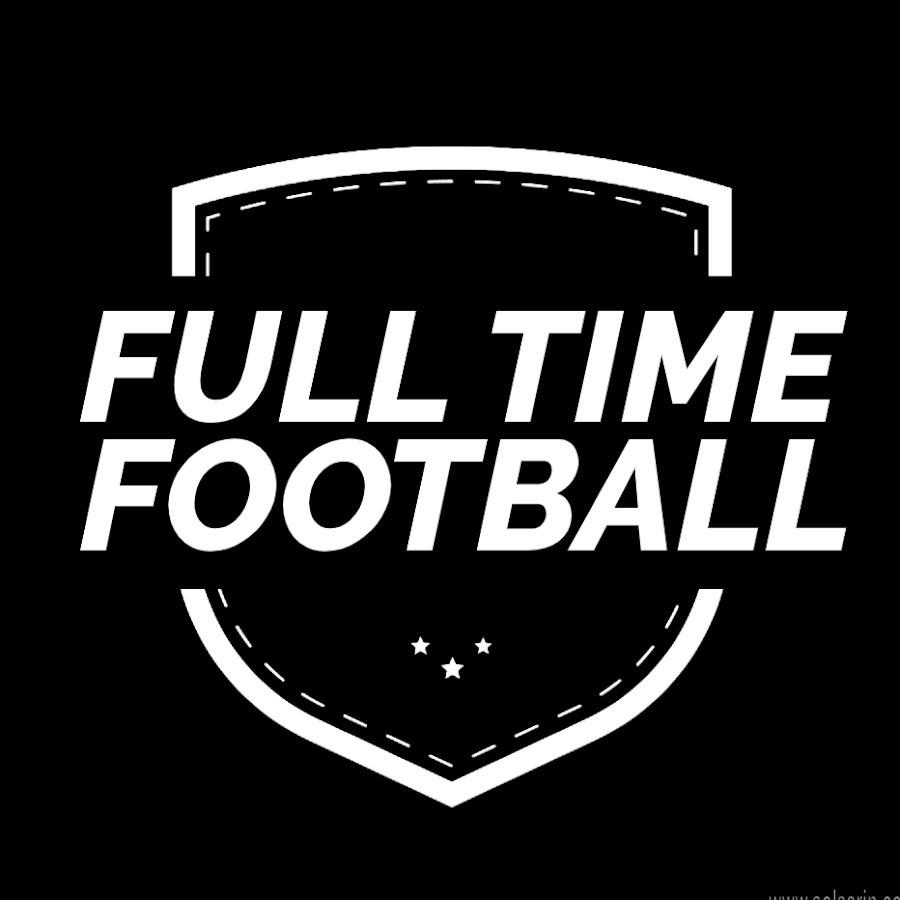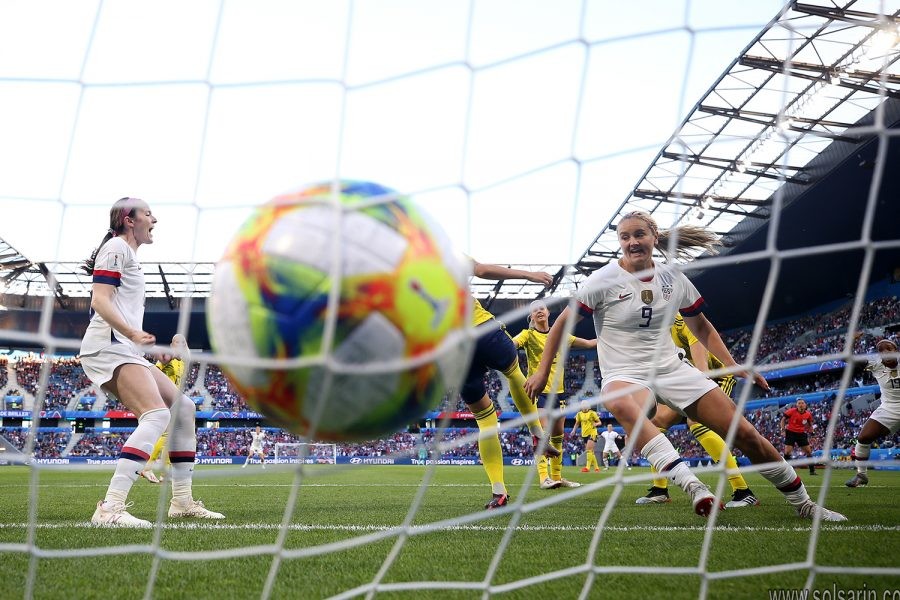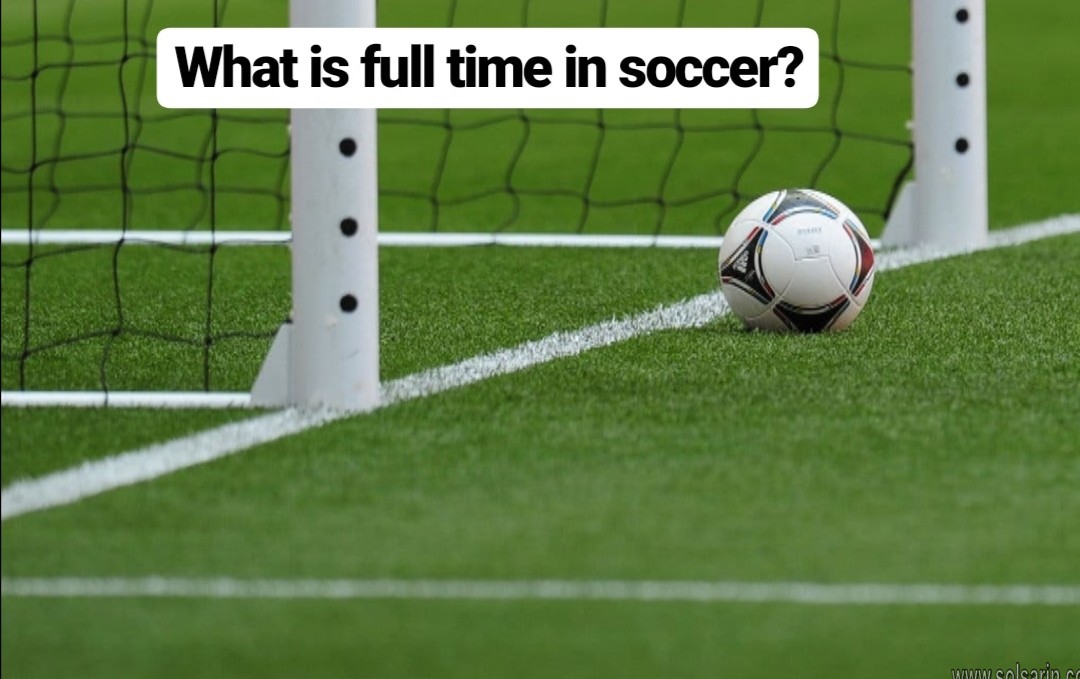what is full time in soccer?
Hi, welcome to solsarin site, in this post we want to talk about“what is full time in soccer”,
thank you for choosing us.
what is full time in soccer?
When we talk about full time, we refer to the 90 minutes the rules say a soccer game should last.
But there is always added time at the end of the halves; that is why some coaches say that their players must be alert during “the 95 minutes the game lasts.”
Many coaches in modern Soccer are training their teams to compete for 95 or 100 minutes.
Still, there is controversy about the added time. After almost every game, coaches discuss how much time was lost and how much the ref added afterward.


If we stick to the rules, FIFA contemplates seven situations in which the time wasted by players or lost by the circumstances should be added at the end of that half.
- Substitutions – Any player substitution made during a stoppage of the game.
- Assessment/ Removal of injured players – The time lost waiting for the medical team to reach the injured player, and the time spent in removing them from the field.
- Wasting time – A player who deliberately delays the restart of the game after a throw-in, a corner kick, a goal kick, or a free=kick.
- Disciplinary sanction – The time spent when a player is shown a yellow or a red car. Discipling the players usually doesn’t take much time; the arguments are time-consuming after the cards are revealed.
- Medical stoppages – These stoppages were created for matches played in scorching weather, where the players need to stop to cool down a bit and drink some water. Ideally, games in this weather should be avoided, but in some regions at a particular time of the year is impossible to do so.
- VAR checks and reviews – This allowance of time is new, and it is the most controversial. Soccer leagues and officials are still getting used to VAR technology, and sometimes revisions take forever to reach a decision. The sensation is that the time stopped for VAR reviews is never added entirely when regular time ends.
- Other delays not contemplated above – The rules try to cover every possible aspect of time delay. Other delays include goal celebrations, arguments with the coaches, and so forth.
The rule also states that if the referee committed a mistake when adding time at the end of the first half, they should not compensate in the second half.
This means that if the ref should have added 4 minutes to the first half and added 3, they should not add that extra minute to the second half.


Does Full Time always end on 90 minutes?
In most cases this is true, for example in national league competitions every match is deemed to be over after the referee calls full time, either on 90 minutes or after the added stoppage time has finished.
However, the length of a soccer game can be longer depending on the competition. In cup competitions where a knockout style system is used, when scores are tied after the 90 minutes have elapsed, the referee will add an extra 30 minutes, known as extra time. This now means that full-time is yet to be called and the match is still in play.
If after the official 90 minutes and extra time scores are still tied, a penalty shootout is used to get a result and decide which team can progress in the competition.
How Long It Takes to Get to Full Time Can Vary?
In the majority of matches, or games, that you will see or play in, after 90 minutes of play the referee will signal the game is over and that will be full time.
However, sometimes after the 90 minutes of the game has been played the scores are tied.
In a game, as part of a league competition, this doesn’t matter and the teams will move on to their next game. But in a tournament setting such as the World Cup or the MLS playoffs, there needs to be a winner.
If this happens, regulation time will be over but it will not be full time.
This is because the playing time will be extended to create more time for one of the teams to score more goals and win the game. This is called extra-time.
Extra time consists of two 15 minute periods of play with a one-minute break between them.
If at the end of extra-time the scores are still tied then it will still not be full-time as we need a winner of the game.
At this point, the players will move on to a penalty shoot-out.
5 players from each team will take a turn to have a free shot at the goal. The only obstacle in the way of them scoring is the opposition goalkeeper.
If after this the scores are still level then consecutive players from each team will take a penalty kick. Each team will alternate taking the penalty kicks until one team takes the lead.
At this point, a winner is declared and it is full time!


So how long do soccer games typically last?
Like referenced above, from start to full time, a soccer match is 90 minutes long, with two 45-minute halves divided by a 15-minute break. (With everything added up, it totals 1 hour and 45 minutes or 105 minutes).
However, soccer matches do not always last 90 minutes only.
Factors like wasted time (by any of the teams), disciplinary sanctions, stoppages for drinks or medical reasons, injuries, substitutions, goal celebrations cause the referee to make allowance for the time lost in each half.
When that’s the case, in the last minute of each half the referee informs the fourth official of the minimum additional time to compensate time lost. This additional time may be increased if needed (to make up for time lost during the additional time).
It’s up to the referee — with all of this taken into account — to decide when the game actually ends.
How Long do Professional Soccer Games Last?
Professional soccer is regulated by the International Football Association Board.
Every year this entity adds, alters or updates the laws of the game.
This is done to ensure the safety of players and fans as well as make the game as exciting as possible.
Law 7 pertains to the duration of professional soccer matches and dictates that every game is composed of two halves of 45 minutes — i.e. each soccer game lasts 90 minutes — plus additional time added by the referee, as needed.
If it’s a playoff match and the result at the end of the 90 minutes is a draw, the match is extended into extra time. Extra time lasts 30 minutes and consists of two halves of 15 minutes.
(If after overtime the score is still a tie, there will be a penalty shootout.)
Length of Game and Timing
Additional Time
A Tie Game
Overtime in World Cup FIFA
Penalty Kicks
Often times the winner of a tie game is determined by penalty kicks. Generally each team gets 5 shots on goal, with each team taking an alternate turn. A different player must take each shot. The team with the most points after 5 shots wins. More shots can be added, if needed.


Why Is The Half-Time Break 15 Minutes Long?
The notion of having a half-time at all dates back to the early days of the game. One of the suspected reasons for its introduction was to allow two teams from different Associations to play against each other and use one set of rules for the first-half and a different set of rules for the second period of play. One such example was when Eton and Rugby school played each other.
It’s likely that the duration of this half-time period as being 15 minutes stems from those early games between Eton and Rugby. Rugby used to play rules that are more closely aligned with the modern-day version of the game named in the school’s honour, whilst Eton played a game more recognisable as association football.
We can suspect that that period of half-time was decided upon as 15 minutes because rugby union matches also have a half-time period of up to 15 minutes in matches. Interestingly, the set limit of 15 minutes for football is actually a relatively modern thing. In 2006 the rules on half-time stated the following:
“The half-time interval must not exceed 15 minutes. Competition rules must state the duration of the half-time interval. The duration of the half-time interval may be altered only with the consent of the referee”.
The clear implication there is that half-time could actually be a different length to 15 minutes,
so it’s not even as though 15 minutes was set in stone; no wonder narrowing down the reason why that length of time was chosen is so tricky!
MORE POSTS:




